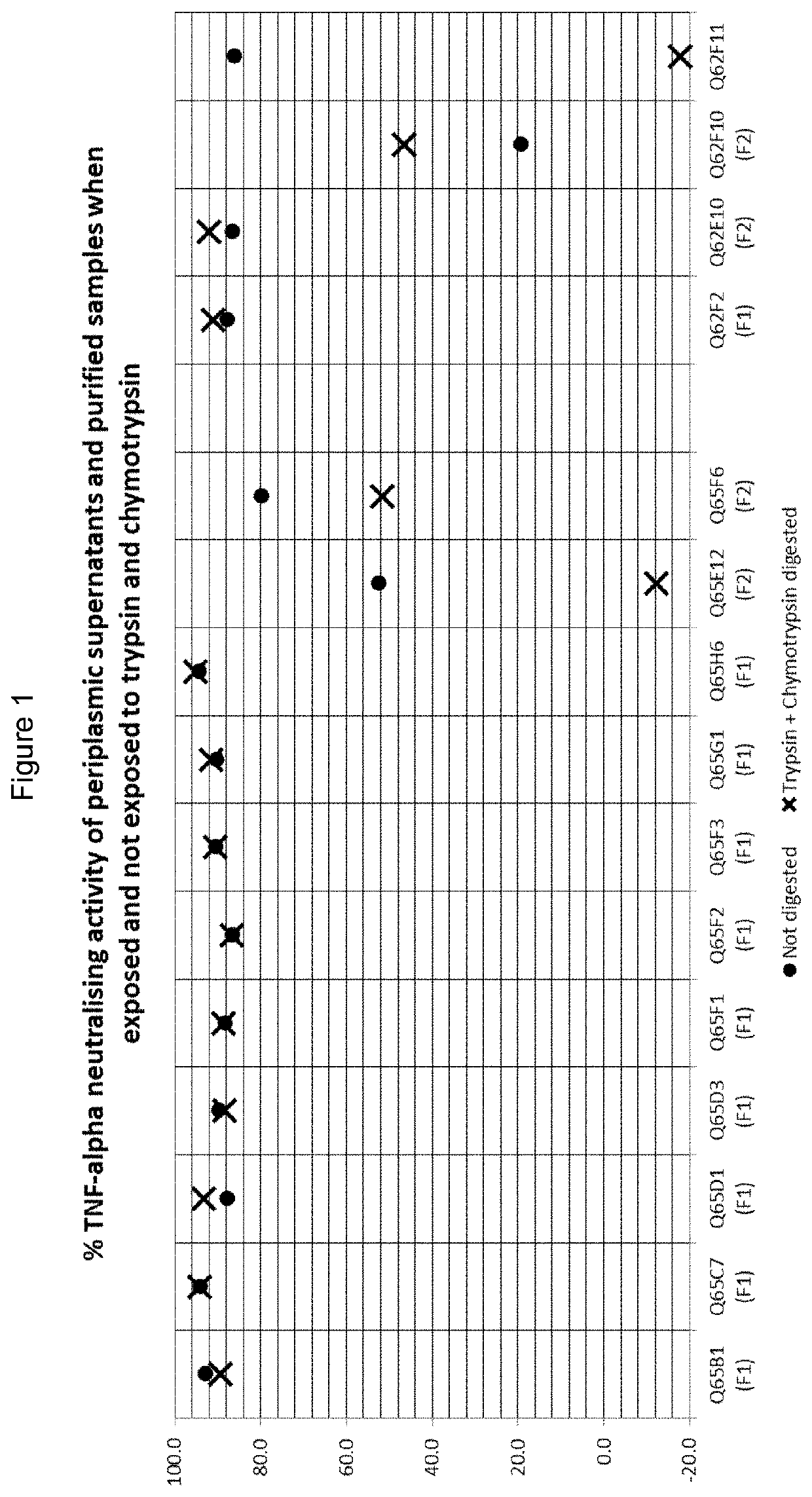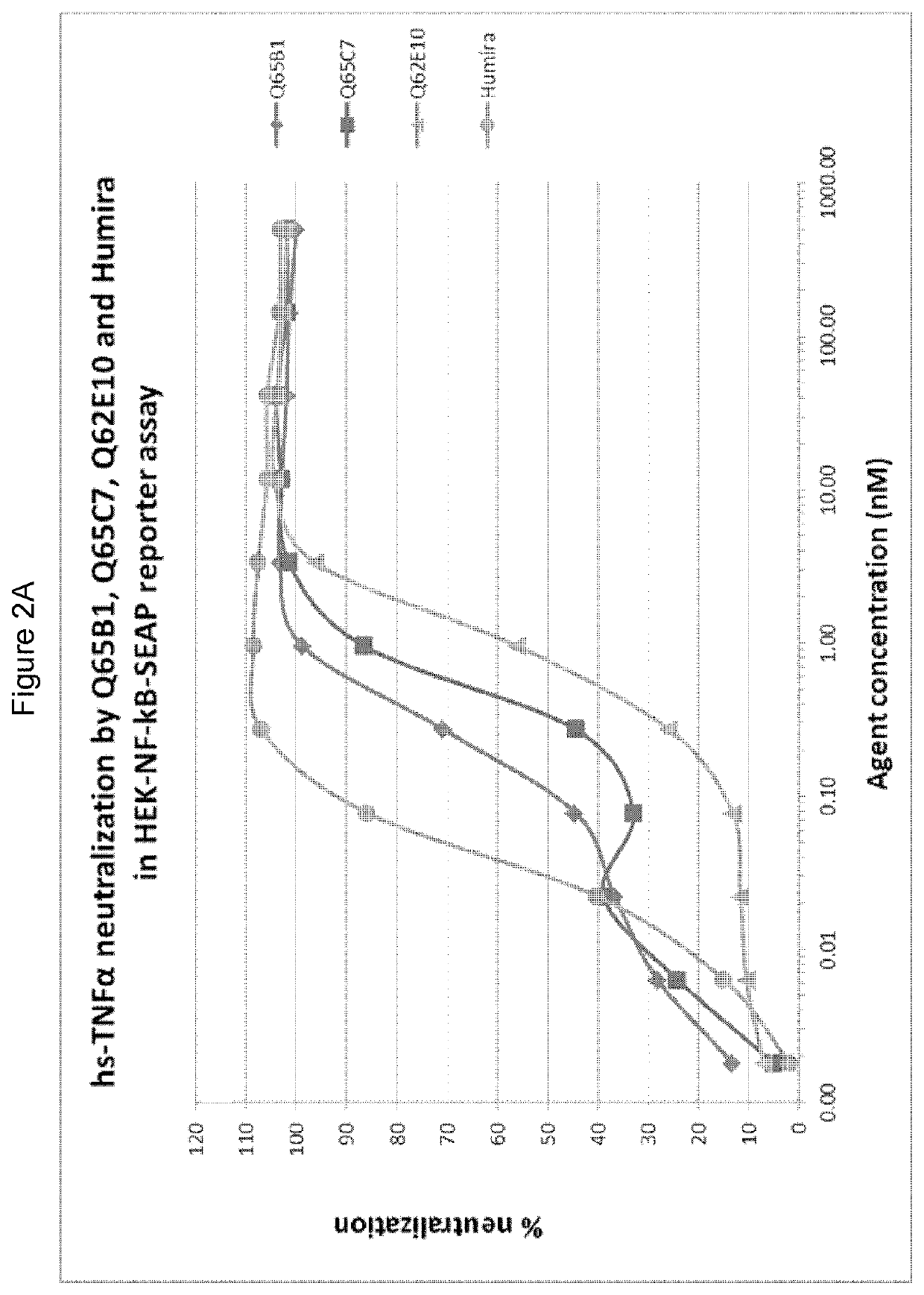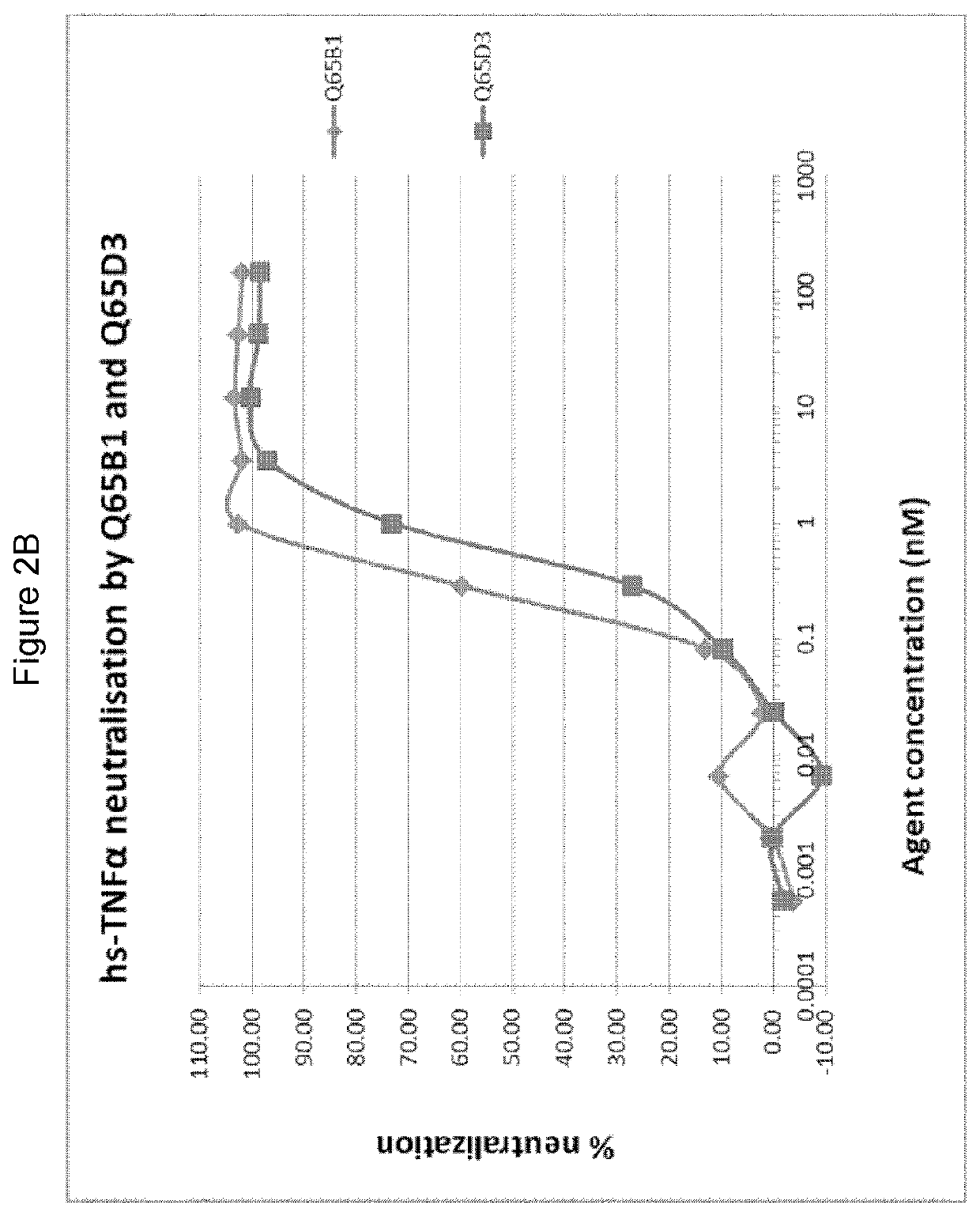Polypeptides
a polypeptide and peptide technology, applied in the field of polypeptides, can solve the problems of affecting the effect of anti-tnf-alpha antibodies, and being difficult to control, and achieve the effect of resisting degradation and/or inactivation, and high potency
- Summary
- Abstract
- Description
- Claims
- Application Information
AI Technical Summary
Benefits of technology
Problems solved by technology
Method used
Image
Examples
example 1
unisation, Phage Display, Immunoglobulin Chain Variable Domain Selection and Propagation
[0379]1.1 Immunisation Protocol 1
[0380]Initially, two llamas (llama 33 and llama 35) each received 3 injections (on days 0, 14 and 28) of soluble human recombinant TNF-alpha (100 ug injected intra-muscularly, after mixing 1:1 with Stimune adjuvant) followed by 2 injections (on days 56 and 70) with THP-1 cells that had been pre-activated by incubation with bacterial lipopolysaccharide to increase membrane TNF-alpha expression (107 THP-1 cells injected subcutaneously in 1 ml PBS). A final boosting immunisation with both soluble TNF-alpha and activated THP-1 cells was given on day 84 and blood was drawn 9 days later for the isolation of peripheral blood lymphocytes and extraction of RNA for library construction.
[0381]1.2 Immunisation Protocol 2
[0382]After resting for a period of four months the llamas were re-immunised with two injections a week apart of CHO Flp-In cells that had been engineered to ...
example 2
valuation of Periplasmic Supernatants from Randomly Selected Immunoglobulin Chain Variable Domain Clones
[0395]2.1 Propagation and Generation of Periplasmic Extracts for Primary Evaluation
[0396]Phage present in eluates from the first round selections on human TNF-alpha and second round selections on cynomolgus monkey TNF-alpha were used to infect E. coli TG1 cells. Colonies were randomly picked (186 clones from Libraries #33 and #35 into master plates M60-M63; 96 clones from Libraries #33NEW and Library #35NEW into master plate M65) and propagated to generate periplasmic supernatants by sequential centrifugation, resuspension in 1× PBS, freeze-thaw fracture and centrifugation of the propagated cultures (M60-63 and M65 are also referred to as ‘MP60-63’ and ‘MP65’, respectively; periplasmic supernatants are also termed periplasmic fractions (PF) or extracts).
[0397]The periplasmic extracts were screened to test for their ability to (i) inhibit the binding of soluble human TNF-alpha to T...
example 4
ctivity with Adalimumab
[0548]Adalimumab 1 pg / ml was coated onto HPM plates then incubated with human TNF-alpha in the absence or presence of the different variable domains. After washing to remove free TNF-alpha-variable domain complexes, TNF-alpha remaining bound to the immobilised mAb was detected by incubation with biotinylated rabbit polyclonal anti hTNF-alpha antibody; mAvidin-HRP followed by TMB were then added for ELISA colour development.
[0549]Results
[0550]Q62E10 (Family 2), Q62F2 (Family 1), Q62F10 (Family 2), Q65A3 (Family 2), Q65B1 (Family 1), Q65C7 (Family 1), Q65D1 (Family 1), Q65D3 (Family 1), Q65E12 (Family 2), Q65F6 (Family 2) and Q62F11 (neither Family 1 nor Family 2), showed complete inhibition of TNF-alpha binding to adalimumab.
Example 5: Stability of Purified E. coli Recombinant Anti-TNF-Alpha Immunoglobulin Chain Variable Domains in Supernatant from Mouse Small Intestine
[0551]The purified variable domains were tested in the presence of a supernatant extract prep...
PUM
| Property | Measurement | Unit |
|---|---|---|
| concentration | aaaaa | aaaaa |
| concentrations | aaaaa | aaaaa |
| concentrations | aaaaa | aaaaa |
Abstract
Description
Claims
Application Information
 Login to View More
Login to View More - R&D
- Intellectual Property
- Life Sciences
- Materials
- Tech Scout
- Unparalleled Data Quality
- Higher Quality Content
- 60% Fewer Hallucinations
Browse by: Latest US Patents, China's latest patents, Technical Efficacy Thesaurus, Application Domain, Technology Topic, Popular Technical Reports.
© 2025 PatSnap. All rights reserved.Legal|Privacy policy|Modern Slavery Act Transparency Statement|Sitemap|About US| Contact US: help@patsnap.com



